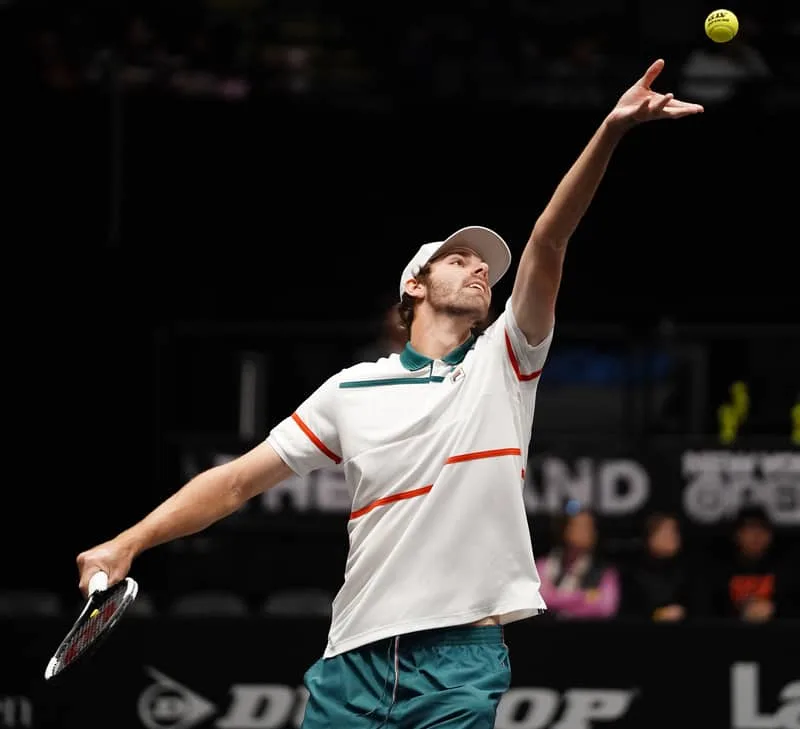
Want to know how to get those pesky kick serves back into your opponent’s court?
In order to do this, I believe you should have a fundamental understanding of how kick serves work, and ideally possess a good one yourself, as this will help you face them when you’re returning serve.
Why Should You Learn a Kick Serve?
It’s a crucial serve to learn for a variety of reasons:
- It gives you more consistency, particularly on your second serve when you’re under pressure, because the ball can dip into the court and give your more margin for error.
- Consequently, you can confidently hit your serve with more pace and spin to keep your opponent under pressure.
- It’s a hard serve to return, particularly at the recreational level, as many players struggle to read the spin and hit balls which are kicking up higher into their strike zone.
In this blog post, I’ll share some tips on how you can return kick serves more effectively.
3 Tips – How To Return A Kick Serve
1) Stand Further Back
One option is to drop far back, even behind the baseline, so that the ball can reach its full peak and start to drop down.
The problem with this strategy is that it will force you out wide on the court, due to the spin on the ball, but it does make it a lot easier to get a good swing at it and allow you extra time to hit your return.
Another problem with staying back when returning a kick serve is if the server is able to come in to the net and use the tried and tested ‘serve and volley’ method.
You really need to hit a strong return if you stay back, with plenty of depth on your shot to keep the server back near the baseline.
2) Move In and Hit It Early
The other option is to move in and try to take the ball early.
By moving inside the baseline of the court, you may be able to get in touch with the ball before it gets too high. This can be tricky to time, but it can be easier than trying to hit the ball after it has peaked.
This allows you a better opportunity to return the shot and to be on the offensive instead of putting yourself in a position where you will constantly be defending yourself from additional attacks.
As you are in a more attacking position, you have more options such as playing a drop shot, or a down the line (or cross court) slice.
3) Watch The Ball Toss
Anticipation is everything in tennis, from split stepping and getting your footwork ready to take the shot, to moving into position and reading your opponent’s ground strokes.
The serve it’s the same, because where the ball is tossed is a big signal as to what you can expect to receive on your side of the court.
Although some of the best servers of all time, like Federer and Sampras, have virtually the same ball toss for flat, kick and slice serves, for most tennis players you can usually spot what serve is coming your way from how they throw up the ball.
INTERESTING FACT – There are other signals tennis players can give off other than the toss when they’re serving. Apparently Agassi could read Becker’s serve when he stuck out his tongue to the side of his mouth. He must have spent hours studying the German’s serve to pick that out surely!
For right handed players, if they toss the ball a bit out to their right, you can usually expect a slice serve, which will skid low and curve through the air.
However, if the ball is thrown over their head more, or even towards their opposite shoulder, you can expect a kick serve, as this is the only way they can get the ball to ‘kick’ when it lands.
Reading this in advance will give you a couple of seconds to anticipate what’s coming and help you hit a great return.
